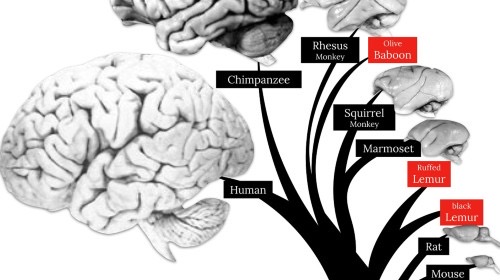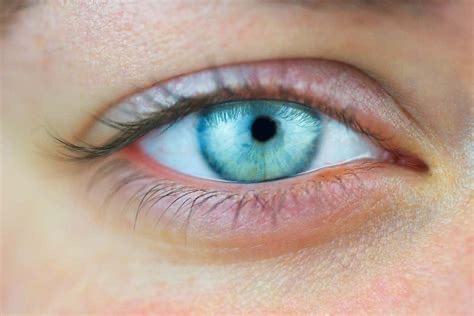There are two types of people, 1- who can see marvel in everything, 2- who can’t see marvel in anything

The Eyes: Windows into the Psyche and Catalysts for Instant Connection
Tue Jan 7, 2025
By Mian Ishaq,
Sahar R Deep

From mental effort to the intricate landscape of a person’s imagination, the human eye serves as a profound conduit of inner experiences. These tiny apertures, seemingly simple in their function, reveal far more than meets the eye. Whether in the subtle dilation of pupils during deep concentration or the fleeting glimmer of emotion in a fleeting glance, the eyes communicate a spectrum of unspoken yet powerful messages. As a psychologist and pupillometrist, I delve into the intricate dynamics of the pupils—the small, black openings in the eye that expand and contract continuously—to uncover how our eyes not only reflect our psychological states but also facilitate profound human connections, such as the enigmatic phenomenon of love at first sight.
The Anatomy and Function of the Eye

Understanding the communicative power of the eyes begins with their anatomy and physiological functions. The pupil, controlled by the iris, regulates the amount of light entering the eye, adjusting in size based on lighting conditions and cognitive load. Pupillometry, the measurement of pupil size and reactivity, has emerged as a valuable tool in psychological research, providing insights into mental effort, emotional arousal, and attentional processes.
Beyond the pupils, other ocular features—such as gaze direction, blink rate, and eye movement patterns—play pivotal roles in non-verbal communication. These elements work in concert to convey intentions, emotions, and levels of engagement, often bypassing the conscious mind to deliver immediate, instinctual signals.
Eyes as Mirrors of Emotional and Cognitive States

The eyes are instrumental in expressing a wide array of emotions. Joy, sadness, anger, fear, surprise, and disgust all manifest uniquely through ocular expressions. For instance, genuine smiles involve the crinkling of the eyes, known as the Duchenne marker, which distinguishes authentic emotion from superficial expressions. Similarly, prolonged eye contact can signal interest, affection, or dominance, depending on the context.
Cognitive processes also leave their imprint on the eyes. Increased mental effort, such as problem-solving or creative thinking, often results in pupil dilation. This physiological response serves as an indicator of cognitive load, providing observers with subtle cues about a person’s mental state. Moreover, the eyes can reflect imagination and creativity; when individuals engage in imaginative thinking, their gaze may become unfocused or directed toward imagined scenarios, revealing the depth of their internal experiences.
The Eyes in Non-Verbal Communication

Non-verbal communication relies heavily on ocular signals. Eye contact, for example, is a fundamental component of interpersonal interactions, conveying interest, attentiveness, and sincerity. In negotiations, maintaining appropriate eye contact can foster trust and facilitate effective communication, while excessive or insufficient eye contact may lead to misunderstandings or perceptions of deceit.
Blink rate and patterns also offer insights into a person’s state of mind. Increased blinking can indicate stress, fatigue, or deception, whereas steady blinking may denote calmness and confidence. Additionally, the direction of gaze can reveal focus and intention; individuals often look toward regions that correspond to their thoughts or the objects of their attention, providing indirect clues about their cognitive focus.
Love at First Sight: The Magic of Eye Contact

Among the most captivating aspects of ocular communication is its role in the phenomenon of love at first sight. This instant, profound attraction between strangers is often precipitated by a powerful exchange of eye contact, suggesting a deep, unspoken connection. Several psychological and physiological mechanisms contribute to this magical occurrence.
1. Rapid Assessment and Compatibility: Upon making eye contact, individuals subconsciously assess numerous factors—such as symmetry, health, and emotional state—that contribute to perceived attractiveness and compatibility. These rapid evaluations can trigger an immediate sense of affinity or intrigue.
2. Emotional Synchrony: Eye contact facilitates emotional synchrony, allowing individuals to resonate with each other’s emotional states. This mutual understanding fosters a sense of intimacy and connection, laying the groundwork for an instant bond.
3. Activation of Reward Pathways: Eye contact stimulates the brain’s reward pathways, releasing neurotransmitters like dopamine that enhance feelings of pleasure and attraction. This neurochemical response can create a powerful impetus towards forming a connection.
4. Non-Verbal Intimacy: The eyes convey vulnerability and authenticity, essential components for establishing trust and emotional intimacy. In the brief moment of eye contact, individuals share a glimpse of their true selves, fostering a sense of closeness and mutual recognition.
Evolutionary Perspectives on Ocular Communication

From an evolutionary standpoint, the eyes have been paramount in social interactions and survival. Detecting threats, forming alliances, and establishing social hierarchies all hinge on effective ocular communication. The ability to read subtle eye cues likely provided our ancestors with advantages in navigating complex social landscapes, enhancing cooperation, and ensuring group cohesion.
Furthermore, the evolutionary development of facial features, including prominent eyes, underscores their importance in non-verbal communication. Large, expressive eyes are not only aesthetically appealing but also serve as essential tools for conveying emotions and intentions, facilitating nuanced interpersonal interactions.
Cultural Influences on Eye Communication

While the fundamental role of the eyes in communication is universal, cultural nuances influence how ocular signals are interpreted and expressed. Different cultures have varying norms regarding eye contact, such as the degree of directness deemed appropriate in conversations. Understanding these cultural variations is crucial for accurate interpretation of ocular messages in diverse social contexts.
For instance, in some cultures, prolonged eye contact may be seen as a sign of confidence and honesty, while in others, it might be perceived as disrespectful or confrontational. These cultural frameworks shape individuals’ experiences and expressions of eye-related communication, adding layers of complexity to the universal language of the eyes.
The Eyes in Modern Relationships and Technology

In contemporary society, the role of the eyes in forming connections persists, even as technology mediates many aspects of human interaction. Digital communication platforms often prioritize visual elements, such as profile pictures and video calls, highlighting the enduring significance of ocular presence in establishing rapport and attraction.
Moreover, advancements in technology, including virtual reality and augmented reality, are exploring new frontiers in replicating and enhancing ocular communication. These innovations underscore the fundamental human reliance on eye-based interactions and the ongoing quest to harness their power in fostering meaningful connections.
Beyond Communication: Cognitive and Biological Marvels of the Eyes

While the communicative functions of the eyes are well-documented, there exist numerous other facets of ocular biology and cognition that remain equally fascinating and, at times, underappreciated.
1. Eyes and Cognitive Processing: The Role of Eye Tracking
Eye tracking technology has revolutionized our understanding of cognitive processes. By monitoring eye movements, researchers can gain insights into how individuals perceive, process, and respond to information. For instance, in reading, eye-tracking reveals patterns such as fixations and saccades, shedding light on comprehension and cognitive load. In decision-making scenarios, tracking gaze can indicate areas of interest and highlight how attention is allocated.
Moreover, eye tracking has applications in user experience (UX) research, helping designers create more intuitive interfaces by understanding where users focus their attention. In psychology, it aids in diagnosing conditions like ADHD or autism, where atypical eye movement patterns can be indicative of underlying cognitive differences.
2. The Eyes and Mental Health: Indicators of Psychological Well-being

Eyes not only reflect immediate emotional states but can also serve as indicators of long-term mental health. Chronic stress, anxiety, and depression can manifest in ocular features such as persistent pupil dilation, dryness, or changes in blink rate. For instance, individuals experiencing anxiety may exhibit increased pupil size due to heightened arousal, while depression might be associated with reduced eye movement and diminished expressiveness.
Recent research suggests that monitoring eye health can provide valuable data for early detection of mental health issues. Integrating pupillometry with other biometric measures offers a non-invasive approach to assessing psychological well-being, potentially leading to more timely and effective interventions.
3. The Mystique of Eye Color: Genetics and Perception

Eye color is a unique and captivating aspect of human diversity, influenced by the distribution and concentration of melanin within the iris. Beyond its genetic underpinnings, eye color plays a significant role in social and psychological perceptions. Studies have shown that certain eye colors are often stereotypically associated with personality traits; for example, blue eyes may be perceived as more trustworthy or serene, while green eyes might be seen as mysterious or alluring.
However, these perceptions are culturally constructed and can vary widely across different societies. The fascination with eye color extends into various domains, including art, literature, and fashion, where it serves as a tool for character development and aesthetic expression. Additionally, variations in eye color can influence interpersonal dynamics, affecting attraction and social interactions in subtle yet meaningful ways.
Eyes in Art, Literature, and Symbolism

Throughout history, the eyes have been a central theme in art and literature, symbolizing everything from wisdom and mystery to deception and vulnerability. Artists have long been captivated by the eyes’ ability to convey depth and emotion, often dedicating significant attention to capturing their intricate details.
In literature, eyes are frequently used as metaphors for insight, truth, and the human soul. Phrases like “the eyes are the window to the soul” underscore the belief that eyes reveal inner truths that words cannot express. Symbolically, eyes appear in various cultural narratives and mythologies, representing divine sight, enlightenment, or the omnipresence of higher powers.
This symbolic significance extends to contemporary media, where characters’ eyes are crafted to reflect their personalities and emotional states, enhancing storytelling and audience engagement. The portrayal of eyes in visual storytelling mediums like film and photography continues to underscore their importance in conveying non-verbal cues and eliciting emotional responses.
Technological Advancements: Eye-Tracking and Beyond

The integration of eye-tracking technology into various fields has opened new avenues for understanding human behavior and enhancing human-computer interactions. In marketing, eye-tracking studies help businesses understand consumer attention patterns, informing the design of more effective advertisements and product placements.
In the realm of accessibility, eye-tracking technology empowers individuals with mobility impairments to interact with computers and other devices using gaze-based controls, significantly enhancing their ability to communicate and engage with the digital world.
Furthermore, advancements in artificial intelligence (AI) and machine learning are enhancing the capabilities of eye-tracking systems, enabling more accurate predictions of user intent and improving the responsiveness of interactive applications. These technological strides not only enhance user experience but also contribute to the broader understanding of human cognition and behavior.
Take home

The eyes are undeniably powerful instruments of communication, transcending verbal language to convey complex emotional and cognitive states. Through the continuous expansion and contraction of pupils, subtle shifts in gaze, and the nuanced expressions they encapsulate, the eyes offer a profound glimpse into the human psyche. Phenomena such as love at first sight exemplify the extraordinary capacity of ocular communication to forge instant, deep connections between strangers, blending physiological responses with psychological processes to create moments of magic and intimacy.
Furthermore, the eyes play critical roles beyond mere communication, influencing cognitive processing, serving as indicators of mental health, and contributing to cultural and artistic expressions. Technological advancements continue to unveil the multifaceted marvels of the eyes, enhancing our ability to interact with the world and each other in more profound ways.
As research in psychology and pupillometry advances, our understanding of the eyes as windows into the soul continues to deepen, revealing the intricate tapestry of human interaction and the enduring allure of eye-based communication. The eyes remain not only a fundamental aspect of our sensory experience but also a testament to the complexity and beauty of human connection.
